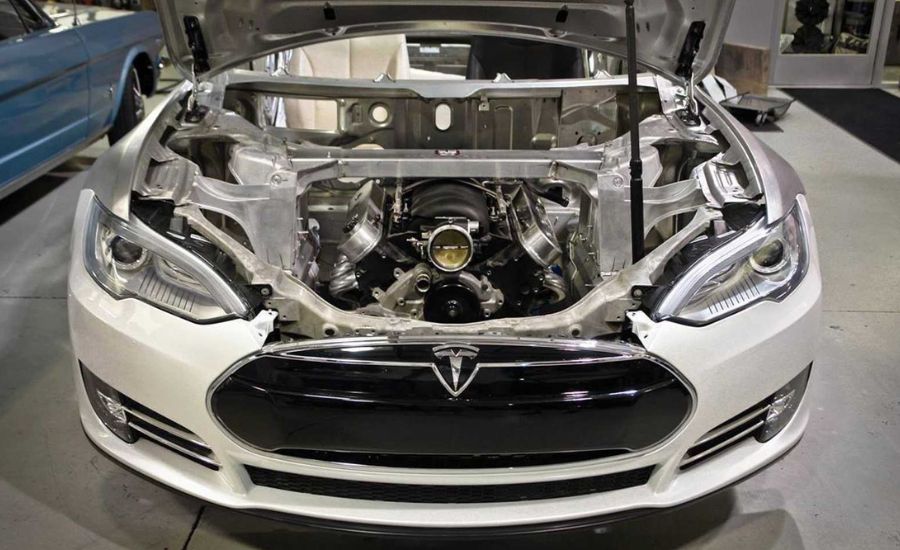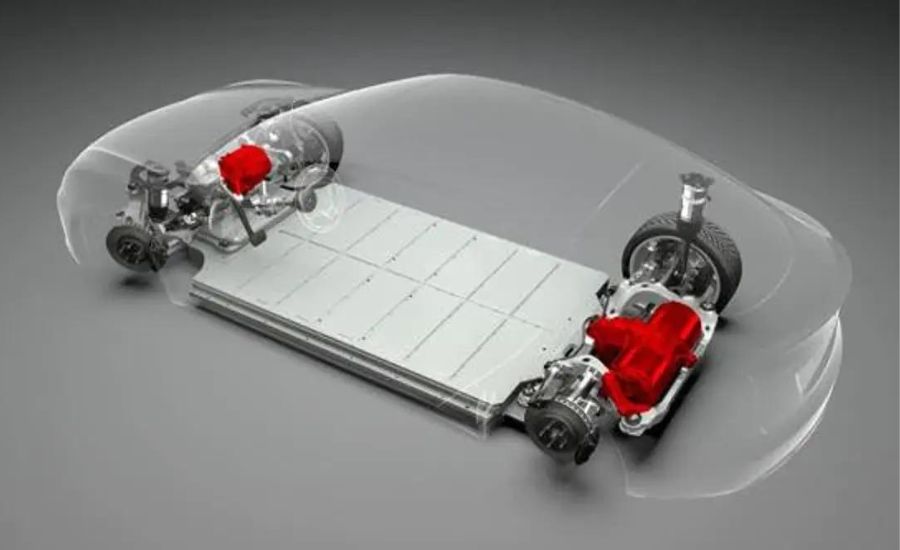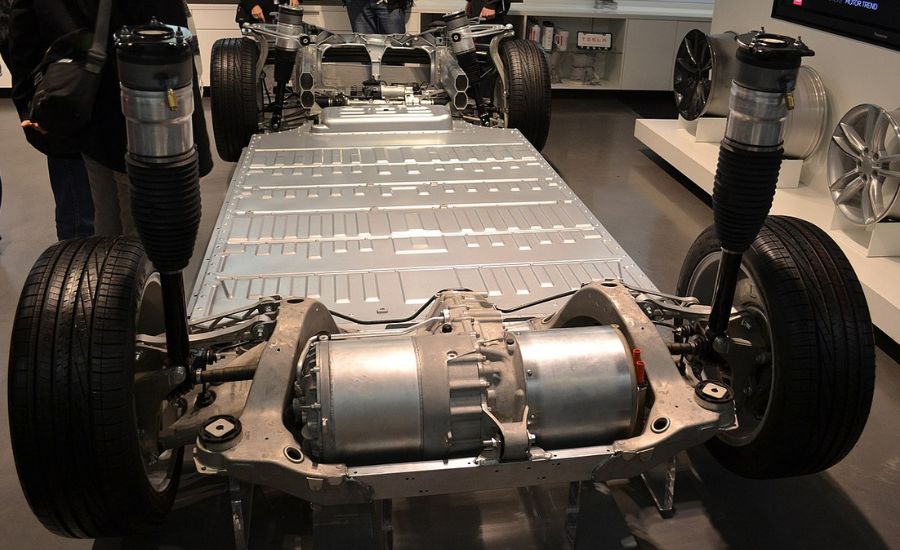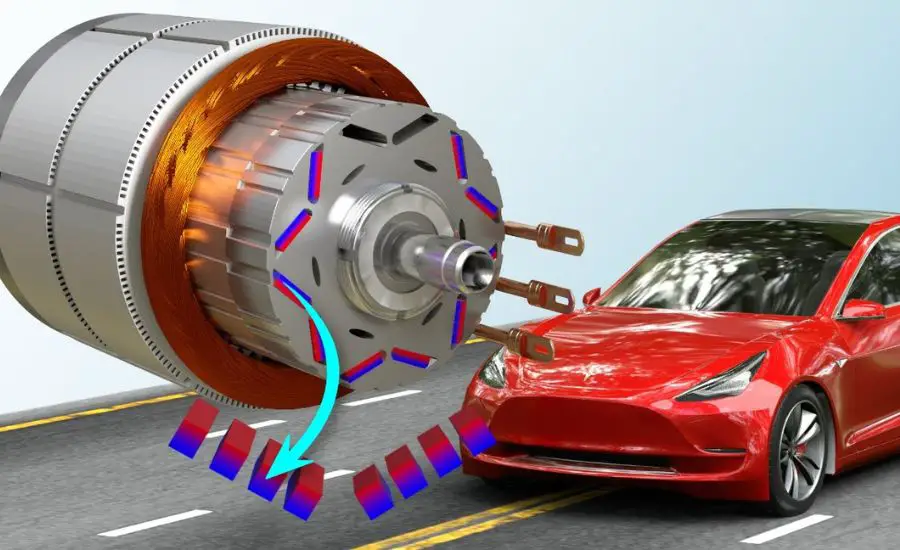As time has passed significantly since the first model of Tesla vehicles, automobiles have made great strides in their technological advancements. Modern cars now possess a wide array of high-tech capabilities making themselves a popular choice among customers.
Tesla is a very well-known electric vehicle company and has gained significant attention for environmentally-conscious devices and innovative appliances. However, a common question is whether Teslas have engines or not. The company is developing a new type of engine that possesses the ability to transform the automotive industry.

Contents
- 1 Do Teslas have engines?
- 2 How does the Tesla engine work?
- 3 Where is the engine in a Tesla model?
- 4 The reason why Tesla cars don’t have internal combustion engines
- 5 Some advantages of the usage of AC motors
- 6 How do Tesla electric cars operate without the engine?
- 7 The number of electric motors in diverse Tesla vehicles
- 8 Frequently Asked Questions
- 9 Conclusion
Do Teslas have engines?
To put it simply, the Tesla model doesn’t utilize an internal combustion engine. Instead, their electric vehicles rely on electric motors that are powered by rechargeable batteries.
On rear-wheel-drive Tesla vehicles, the electric motor is situated on the rear axle, while all-wheel-drive have electric motors on both the front and rear axles.
While traditional engines are dependent on fossil fuel combustion for operation, the electric motor of Tesla vehicles functions in tandem with rechargeable battery packs. This means that rather than purchasing gasoline at a gas station, you ought to recharge your battery periodically.
Charging can be undertaken through a normal outlet or a wall charger, which is considerably faster. This procedure relies on the power produced by the rotational force of the magnetic field.
Unlike internal combustion engines, electric cars of Tesla don’t emit dangerous substances into the environment.
Comparison of electric motor and traditional engine
Electric motors have substantially higher torque than traditional internal combustion engines. Torque refers to the rotational force generated by an engine, which takes an important place in the overall performance of the electric vehicle.
Electric motors can produce more torque at lower speeds, letting Tesla cars achieve great acceleration from a stationary position.
Regarding efficiency, electric motors are significantly superior to traditional internal combustion engines since they don’t rely on the combustion reaction, which is intrinsically inefficient.
Electric motors work without fossil fuel combustion and fully depend on the electricity supply.
How does the Tesla engine work?
As internal combustion engines are absent in electric cars, it raises the question of how their engines function. Before diving into the specifics, it’s important to comprehend that the term electric car engine refers to an electric motor.
Therefore, it’s necessary to clarify how Tesla electric cars attain exceptional power by analyzing the technologies behind this unique and innovative process.
At the core of Tesla vehicles lies the induction motor, a revolutionary invention by the renowned scientist Nikola Tesla over a century ago.
More about induction motor
The induction motor consists of a stator and a rotor, with the stator producing a rotating magnetic field that induces electric flow on the rotor bars to enable it to turn.
Despite not having a permanent magnetic field or brushes, the induction motor is powerful and durable, and its speed can be controlled by adjusting the supply of power coming from alternating current, providing a key benefit to electric vehicles.
Additionally, the motor’s speed range is of great width compared to that of gasoline-powered engines, so where does the necessary power come from?
Battery pack and its assistance
All the power needed to run the induction motor in an electric car comes from the battery pack, which yields a direct current that needs to be transformed into alternating current utilizing an inverter.
In Tesla’s battery pack, small lithium-ion cells are connected diversely to provide the necessary amount of power for the system. Tesla cars consist of around 16 modules, which ensures the reliability, durability, and efficiency of the battery pack.
Inverter and its functions
The inverter controls the frequency and amplitude of the alternating current, which ultimately controls the speed and output of the induction motor. Essentially, the inverter serves as the brain of the electric car, allowing precise control over the vehicle’s performance.
Where is the engine in a Tesla model?
As we have examined how the Tesla engine works and looked through its components which contribute to the innovative procedure of driving without harming the surroundings, the next important moment is the placement of the engine.
The engine of Tesla cars is an electric motor and high voltage battery pack. Therefore, their location should be given.
The high-voltage battery pack is situated at the back of the seats in the area of the trunk, while the electric motor is placed behind the battery pack between the rear wheels to ensure a straightforward flow of battery power.

The reason why Tesla cars don’t have internal combustion engines
Tesla cars possess a high degree of uniqueness, particularly due to the lack of the traditional internal combustion engine.
Instead, they are equipped with electric motors that derive their power from batteries, resulting in significantly higher efficiency when compared to gasoline-powered engines.
Moreover, the utilization of electric motors eliminates the necessity for traditional engines that consume gasoline and release harmful pollutants into the environment.
Conventional vehicles emit water with oxides of carbon. The latter product results in global warming and is one of the very dangerous greenhouse gases. Consequently, it will minimize the damaging impact of gasoline engines powered by the combustion of fossil fuels.
Additionally, electric cars work more quietly than traditional gasoline engines, therefore contributing to a more serene driving experience in Tesla models.
Furthermore, the instant torque provided by electric motors enables Tesla models to accelerate smoothly and rapidly, further emphasizing the superiority of electric motors over gasoline engines.
In addition, electric motors possess fewer moving parts, which alleviates their overall maintenance and increases reliability. It is for these reasons that Tesla model cars don’t have gas-powered engines, as electric motors present numerous benefits.
Another intriguing thing is the utilization of AC motors instead of DC motors.
Some advantages of the usage of AC motors
AC motors provide increased torque when compared to gas-powered engines. This translates to faster acceleration and a more powerful driving experience.
Consequently, efficiency is a top concern for electric car drivers, as a lower efficiency can result in reduced range and the necessity for more frequent charging.
Fortunately, Tesla’s usage of the AC motor contributes to improved efficiency, which means that you can drive further on a single charge.
The further benefit is the compact design. AC motors have a superior ratio of size to power when compared to direct current motors, which enables them to significantly reduce the weight of electric cars.
This reduced weight not only improves efficiency but also requires less space for installation, which allows for a more compact overall design.
AC motor is more durable than the DC motor, which can deteriorate over time and even pose a safety risk. AC motors offer improved efficiency, reliability, and longevity, making them a superior choice for electric cars like Tesla.
These statements show the benefits of the Tesla motor when compared to traditional gas-powered vehicles.
How do Tesla electric cars operate without the engine?
Teslas are unique in that they don’t rely on combustion engines like traditional cars, instead opting for electric motors powered by electricity. So, Testa electric motors don’t rely on engines in a traditional sense.
Despite this unconventional setup, it offers previously mentioned benefits, including consumption of less amount of energy, improved efficiency, and less harm to the surroundings.
So, the lack of traditional engines creates a free space in the front of the vehicle.
This place is named a frunk and provides people with extra storage for their necessities.
As Tesla utilizes electric motors unlike conventional cars, it might be interesting to comprehend how many motors there are in the Tesla cars.
The number of electric motors in diverse Tesla vehicles
The number of electric motors is fully dependent on the model of the Tesla car.
For instance, Tesla Roadster possesses one electric motor with single-motor rear-wheel drive, Tesla Model X utilizes three electric motors, one of which is a rear axle and the other is a front axle, with dual motor all-wheel drive.
The other interesting model is Model S with one front and two rear axles. This type of Tesla engine has tri-motor all-wheel drive.

Frequently Asked Questions
The answers to some common questions are given below.
Are Tesla engines in the back?
As was stated previously in the article, Tesla electric cars don’t possess an engine, rather they utilize electric motors. Tesla motors are located in different placements depending on the drivetrain.
For instance, in rear-wheel drive ones, the motor is located to the right of the rear axle while in all-wheel drive ones, it is situated between the front wheels.
Where are the engines in a Tesla Model 3?
Teslas have engines that correspond to the standards and requirements of our century. So, Tesla Model 3 possesses two motors, front and rear, with dual-motor all-wheel drive. The first motor is placed between the rear wheels, the next one is located at the front axle.
However, there is a version with one motor that is placed between the rear wheels.
Is the Tesla motor in the front or back?
It depends on the model of the car and the type of Tesla engine that is utilized. According to the provided information, rear-wheel ones have the motor located under the rear set, while all-wheel drive models have it placed between the front wheels.
Therefore, the answer to this question can be given based on the model of Tesla.
Are Tesla engines in the trunk?
Even though Tesla models have a front trunk, their engines are located either near the right side of the rear or between the wheels in the front part. Consequently, trunks are commonly utilized as storage for necessary things.
Conclusion
So, as an innovative car manufacturer, Tesla tries to create durable, effective, and environmentally-friendly vehicles, which provide owners with comfort and suitable conditions. The results are Tesla vehicles that can operate without an engine.
Even though they don’t possess an engine, they are reasonably more effective and better than conventional vehicles. Not only do they emit less harmful substances, but also these vehicles are less noisy. These qualities made them a top choice in the car market.
Their engines, which are the electric motor and the high-voltage battery pack, are situated differently based on the car model.


